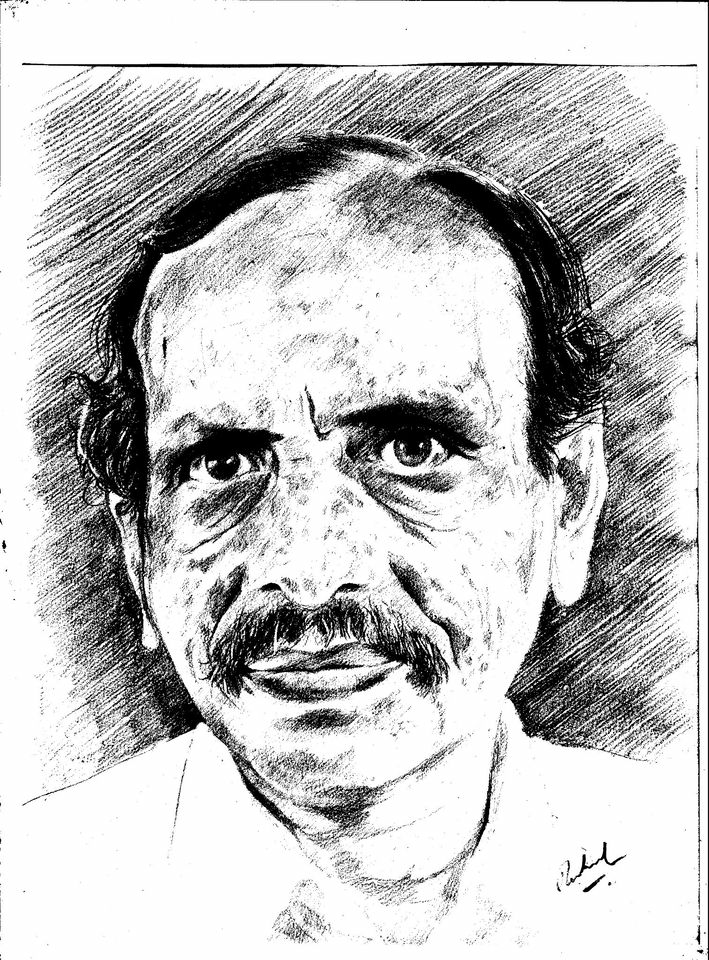|
|
[NOTES/QM-09006] Heisenberg Picture of quantum mechanicsNode id: 4709page
The time evolution of states a quantum system is given by the time dependent Schrodinger equation. Besides this framework, called the Schr\"{o}dinger picture, other scheme are possible. In the Heisenberg picture, defined here, the observable evolve according to the equation \[\dd[X]{t} =\frac{1}{i\hbar}[F, H] \]This equation corresponds to the classical equation of motion in the Poisson bracket formalism.
$\newcommand{\DD}[2][]{\frac{d^2 #1}{d^2 #2}}$ $\newcommand{\matrixelement}[3]{\langle#1|#2|#3\rangle}$$\newcommand{\PP}[2][]{\frac{\partial^2 #1}{\partial #2^2}}$$\newcommand{\dd}[2][]{\frac{d#1}{d#2}}$$\newcommand{\pp}[2][]{\frac{\partial#1}{\partial#2}}$$\newcommand{\average}[2]{\langle#1|#2|#1\rangle}$
|

|
24-03-24 18:03:38 |
n |
|
|
[NOTES/QM-09009] A Summary of Time Evolution in Schrodinger Picture Node id: 6118page
Main points of time evolution in Schrodinger picture are summarized.
|

|
24-03-24 10:03:57 |
n |
|
|
[NOTES/QM-09005] Schr\"{o}dinger Picture ---- Important PointsNode id: 4708page
The time evolution of a general quantum system is reviewed in an abstract setting. The eigen states of energy are seen to have all properties that make them qualify for being called stationary states.The stationary states have the property that all observable quantities remain constant in time.
$\newcommand{\DD}[2][]{\frac{d^2 #1}{d^2 #2}}$
$\newcommand{\matrixelement}[3]{\langle#1|#2|#3\rangle}$
$\newcommand{\PP}[2][]{\frac{\partial^2 #1}{\partial #2^2}}$
$\newcommand{\dd}[2][]{\frac{d#1}{d#2}}$
$\newcommand{\pp}[2][]{\frac{\partial #1}{\partial #2}}$
$\newcommand{\average}[2]{\langle#1|#2|#1\rangle}$
|

|
24-03-24 05:03:08 |
n |
|
|
[LECS/QM-08002] Angular Momentum Eigenvalues EigenvectorsNode id: 6116page |

|
24-03-24 04:03:23 |
n |
|
|
[NOTES/QM-09003] Solution of TIme Dependent Schrodinger Equation Node id: 4706page$\newcommand{\DD}[2][]{\frac{d^2 #1}{d^2 #2}}$ $\newcommand{\matrixelement}[3]{\langle#1|#2|#3\rangle}$ $\newcommand{\PP}[2][]{\frac{\partial^2 #1}{\partial #2^2}}$ $\newcommand{\dd}[2][]{\frac{d#1}{d#2}}$ $\newcommand{\pp}[2][]{\frac{\partial #1}{\partial #2}}$
A scheme to solve the time dependent Schr\"{o}dinger equation \begin{equation} \label{eq01} i\hbar \dd{t}\ket{\psi} = \hat{H} \ket{\psi} \end{equation} is described. The final solution will be presented in the form, see \eqref{eq14} \begin{equation} \ket{\psi t} = U(t, t_0) \ket{\psi t_0} \label{eq16} \end{equation}where
\begin{equation}\label{EQ16A} U(t, t_0) \ket{\psi t_0} = \exp\Big(\frac{-i H(t-t_0)}{\hbar}\Big)\end{equation}
|

|
24-03-23 05:03:26 |
n |
|
|
[NOTES/QM-18006] Validity of Born Approximation:For spherically symmetric potential V (r)Node id: 4838page$\newcommand{\DD}[2][]{\frac{d^2 #1}{d^2 #2}}$
$\newcommand{\matrixelement}[3]{\langle#1|#2|#3\rangle}$
$\newcommand{\PP}[2][]{\frac{\partial^2 #1}{\partial #2^2}}$
$\newcommand{\dd}[2][]{\frac{d#1}{d#2}}$
$\newcommand{\pp}[2][]{\frac{\partial #1}{\partial #2}}$
$\newcommand{\average}[2]{\langle#1|#2|#1\rangle}$
$\newcommand{\ket}[1]{\langle #1\rangle}$
qm-lec-18006
|

|
24-03-22 19:03:02 |
y |
|
|
[LECS/QM-08003] Application of Harmonic Oscillator to CrystalsNode id: 6117page |

|
24-03-21 06:03:39 |
n |
|
|
[LECS/QM-08001] Energy Levels of Harmonic OscillatorNode id: 6115page |

|
24-03-21 06:03:59 |
n |
|
|
[NOTES/SM-01006] The Fundamental Postulate of SMNode id: 6111page |

|
24-03-20 22:03:36 |
n |
|
|
[NOTES/SM-01001] Thermodynamic CoodinatesNode id: 6114page |

|
24-03-20 15:03:27 |
n |
|
|
[NOTES/SM-01002] A Brief Overview of Statistical MechanicsNode id: 6113article
What coordinates, microscopic or macroscopic, are used in statistical systems? How are the macroscopic variables are related.
|

|
24-03-20 15:03:37 |
n |
|
|
[NOTES/SM-01004] Microscopic DescriptionNode id: 6112page
In statistical mechanics one focuses attention on the microscopic states and has a formalism to derive properties of macro states of the system.
|

|
24-03-20 14:03:40 |
n |
|
|
[NOTES/SM-01007]Important Concepts and Results from ThermodynamicsNode id: 6110page |

|
24-03-20 13:03:21 |
n |
|
|
[NOTES/QM-06011] Uncertainty RelationNode id: 6108page
The uncertainty, \(\Delta A)_\psi\), in a dynamical variable, \(X\) in a state, \(\psi\), is defined by\begin{equation}(\Delta X)^2_\psi = \langle (\hat{X} -\overline{X})^2 \rangle_\psi.\end{equation}Using this definition we derive an uncertainty relation between two non commuting dynamical variables,.
$\newcommand{\average}[2]{\langle#1|#2|#1\rangle}$ $\newcommand{\Label}[1]{\label{#1}}$ $\newcommand{\Norm}[1]{||#1||}$ $\newcommand{\norm}[1]{\langle#1|#1\rangle}$
|

|
24-03-20 04:03:33 |
n |
|
|
Testing MathJAxNode id: 6109page $\newcommand{\average}[2]{\langle#1|#2|#1\rangle}$
|

|
24-03-19 11:03:36 |
n |
|
|
[NOTES?QM-06009] Functions of OperatorsNode id: 6107page
Function of an operator is defined and properties are discussed.
|

|
24-03-19 08:03:19 |
n |
|
|
[NOTES/QM-06007] Compatible Dynamical VariablesNode id: 6106page
The question of simultaneous measurement of two dynamical variables is analysed. Starting from the postulates it is argued that two variables can be measured simultaneously if and only of they commute. This result generalizes to simultaneous measurement of several dynamical variables.
|

|
24-03-19 05:03:24 |
n |
|
|
[NOTES/QM-06005] Probability and Average ValueNode id: 6105page
Starting with the postulates of quantum mechanics, it shown that the average value of a dynamca variable is given by\begin{equation}
\langle A \rangle_\psi =
\frac{\langle\psi|\hat{A}|\psi\rangle}{\langle{\psi}|{\psi}\rangle}
\end{equation}
|

|
24-03-18 13:03:21 |
n |
|
|
[NOTES/QM-06002] Postulates of Quantum MechanicsNode id: 5454page
We list the postulates of the Hilbert space formulation of quantum mechanics. These are
- Description of states on quantum systems.The states are represented by vectors in a complex vector space
- Hermitian operators as observables.The observables are represented by hermitian operators
- This postulate connects theory with experiments by giving rules for computation of probabilities.
- Canonical quantizationThis postulate gives the basic commutation relations and makes actual computation possible.
- Law for time evolutionThis postulate plays the same role for quantum mechanics as "Newton's Second Law" does for Newtonian mechanics
- Symmetrization postulate.This is the spin statistics connection giving symmetry properties of wave functions under exchange of two identical particles.
|

|
24-03-18 13:03:27 |
n |
|
|
[NOTES/QM-06004] A Discussion of The Third Postulate of Quantum MechanicsNode id: 5877page
The third postulate of quantum mechanics is discussed in detail.
|

|
24-03-18 13:03:18 |
n |